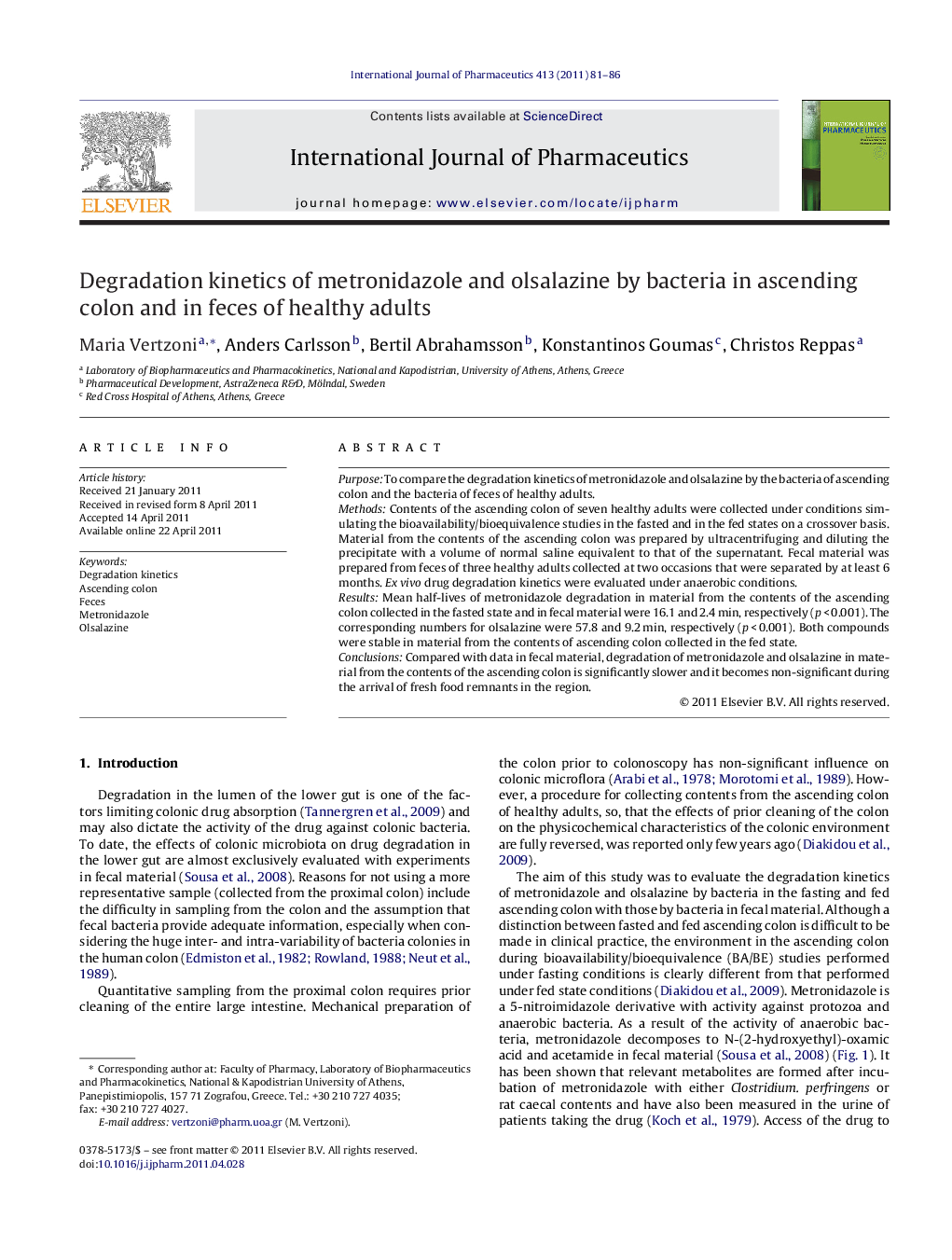| Article ID | Journal | Published Year | Pages | File Type |
|---|---|---|---|---|
| 2503219 | International Journal of Pharmaceutics | 2011 | 6 Pages |
PurposeTo compare the degradation kinetics of metronidazole and olsalazine by the bacteria of ascending colon and the bacteria of feces of healthy adults.MethodsContents of the ascending colon of seven healthy adults were collected under conditions simulating the bioavailability/bioequivalence studies in the fasted and in the fed states on a crossover basis. Material from the contents of the ascending colon was prepared by ultracentrifuging and diluting the precipitate with a volume of normal saline equivalent to that of the supernatant. Fecal material was prepared from feces of three healthy adults collected at two occasions that were separated by at least 6 months. Ex vivo drug degradation kinetics were evaluated under anaerobic conditions.ResultsMean half-lives of metronidazole degradation in material from the contents of the ascending colon collected in the fasted state and in fecal material were 16.1 and 2.4 min, respectively (p < 0.001). The corresponding numbers for olsalazine were 57.8 and 9.2 min, respectively (p < 0.001). Both compounds were stable in material from the contents of ascending colon collected in the fed state.ConclusionsCompared with data in fecal material, degradation of metronidazole and olsalazine in material from the contents of the ascending colon is significantly slower and it becomes non-significant during the arrival of fresh food remnants in the region.
Graphical abstractCompared with data in fecal material, degradation of metronidazole and olsalazine in material from the contents of the ascending colon is significantly slower and it becomes non-significant during the arrival of fresh food remnants in the region.Figure optionsDownload full-size imageDownload as PowerPoint slide
